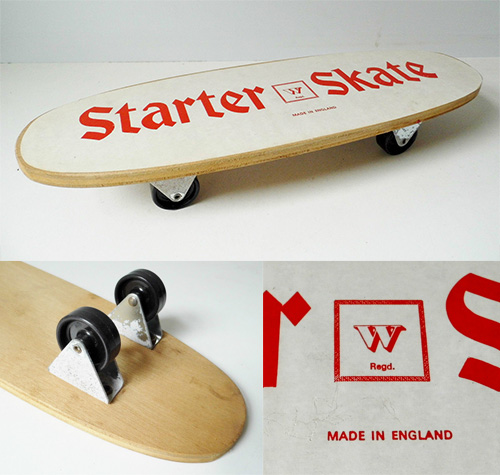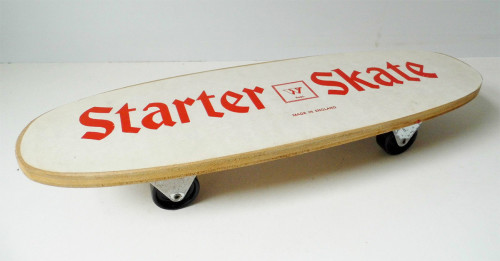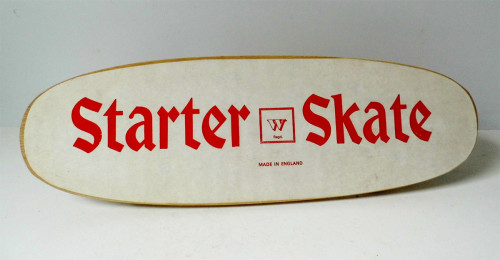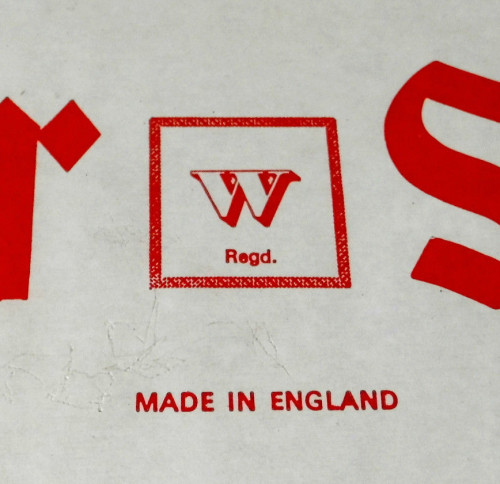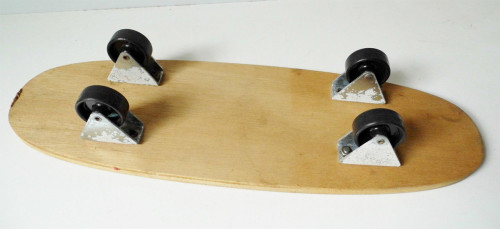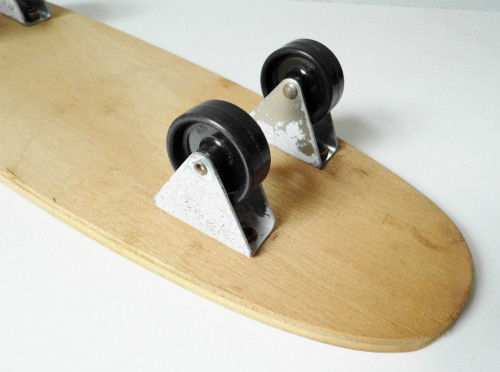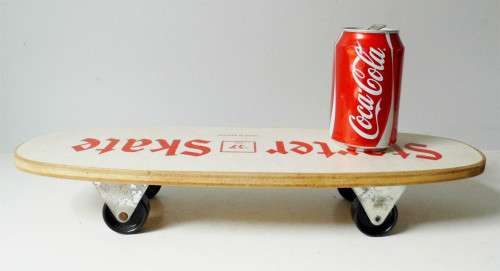http://samisanpakkila.com/2015/04/samurai-rauni-reposaarelainen-a-feature-film-in-the-making-part-1-introduction/
We’ve been shooting our first feature film Samurai Rauni Reposaarelainen since January 2013. This is the first post of a few I will write during the production of the film. I don’t want to say too much about the storyline before we’ve released the film so for now the posts will be more about the technical hurdles. I hope that we can encourage and help others in making their own independent feature film as well. At the moment we’re more than three quarters through the shoot and we released our first teaser for the movie in September 2014.
The core of the crew working on the film consists of about fifteen people who all work without pay. We have received two grants from the Finnish Cultural Foundation, Satakunta regional fund. All the money we spend goes to food, travel and gear rentals. It’s quite amazing how quickly it adds up when you have 15-20 people that you need to feed and transport daily.
Most of our crew does not have an education in cinema and are self taught. The whole process though has proven a film school created by ourselves. Myself I have graduated as a Bachelor of Arts from Tampere Polytechnic and have learned most of what I know about film-making online. Our director Mika Rättö is a genuine self-made artist who very much keeps the spirit up on our shoots and has the ability to keep the crew working for the same goal no matter the shortcomings of our budget or gear. Mika still writes his scripts and books on a 20th century desktop PC that crashes every time you touch it. Getting the script out on a USB stick is always a drama in itself. Turning a disadvantage to our advantage by wit and hard work is our main asset in my opinion. Tuomas Laurila who is the sound recordist is currently working as a public servant in Helsinki but is actually the only one of us who has official qualifications for his job. Harri Sippola is working under the moniker of production manager and takes care of the timetables, logistics, budget, food etc. Anna-Mari Nousiainen is our gaffer, she sets up the lights, Eeva Tuomi is our script supervisor, Pasi Salmi scores the music, Tuomas Niskanen is also a script supervisor, boom operator and acts as well, Teemu Rosenqvist is our grip and dolly operator, Kai Johansson is the driver, Anna Elo is our set decorator and Eetu Henttonen does a lot of the graphic design. Although during the shoot everyone does a bit of everything, one can roughly assign these roles. There’s also many other people who work on the movie, not to mention the actors, whom I will mention in the upcoming posts.
The birth of the film
Samurai Rauni Reposaarelainen originated as a play that Teatteri Moderni Kanuuna collective realized and Mika Rättö directed in early 2010 in Pori, Finland. The play ran for about 4 weeks and visited a few other cities as well besides Pori. I myself saw the play in Pori but was not involved in its realization. We’ve worked with Mika on a few different projects together. I’ve recorded Kuusumun Profeetta albums and released Eleanoora Rosenholm albums in which Mika is the composer, lyricist and musician. It’s been a dream of both of us to make a movie since we were kids. Now was the time.
We first began adapting the play Samurai Rauni Reposaarelainen into a film script around 2012. Mika had written the first draft and we began to meet about once a month. We would sit at Mika’s home with Tuomas Niskanen, Tuomas Laurila, Harri Sippola and Pasi Salmi. People gathered to throw around ideas, read and rewrite the script together. It took us around a year to get the script to a shape where we felt we’d be happy to start filming it. The script has changed a lot since that and most if not all the scenes have been re-written. We’ve shot additional material for many of the scenes as well and have had to re-shoot a few. Luckily we’ve had time and patience but most of all the drive to do it properly.
Our first practice shoot on my parents backyard in December 2012 was extremely chaotic. We started to rehearse the actors and cameras movements for the first scene. Mika was shouting for me to run after him and follow his moves. Off we went, Mika running and waving a samurai sword and me stumbling along with the camera in the deep snow. The end results we’re not exactly cinematic, but the seeds of a few important things and ideas we’re set that day. Most of all the realization that we’d need to practice… a lot!
We had our first real shoot in March 2013. We did spend quite some time planning it but now in hindsight we shot a short film during those days and not a scene for a feature film. We had too many ideas and too many shots which we’re not consistent with the emotional needs of the scene or the narrative. The camera work was all over the place as well, too many close ups or not enough close ups. It’s quite a different thing to shoot a music video or a documentary where you can resort to jump cuts or inconsistency, with narrative work even those should be deliberated. It was also very time consuming as we hadn’t really planned and prepared properly. It is telling that the first time we shot the scene we spent four days shooting it and over a week trying to get it to work in the edit. When we shot it the second time it took us only one day to shoot and half a day to edit. So calculating by those numbers our efficiency has improved by 500%.
In a production of this magnitude it’s extremely important to be able to adapt. By necessity we’ve had to become more and more organized. Sometimes an actor cancels two days before a shoot, locations change or it rains and you need to handle it all without sacrificing any of the creativity you put into the idea. In essence that’s what movie making is about most of all, problem solving. This we’ve learned the hard way.
At the moment we spend at least four to six days planning every scene (a shoot for one scene varies from two to six days and we have a total of 17 scenes in the movie). Two to six days is spent rehearsing with actors. On top of this organizing catering, transport, timetables, costumes, rental equipment and props takes countless of hours of work. So all in all one day of shooting (that produces around two to three minutes of finished material) means 10 days of work. So far we’ve shot 45 days and are looking at shooting another 10 days at least. Add to that editing, audio editing, color grade and other post work. The finish is still a long way ahead. When we began filming I did fantasize about the premiere but it’s been such a long project that you let go of that and start to enjoy the process itself.
Picture composition and lighting
The first big choice one needs to make starting a film is which aspect ratio to shoot. I decided we would go with 16:9. It’s almost the same as 1.85:1 which is a standard in many places. I knew that our film would be more character driven and this aspect ratio is very well suited for this type of narrative. We would not have that many beautiful sceneries which would look better in a more wide frame like 2.40:1.
It’s incredible what you can learn just by doing things yourself and reading about them online. In the beginning I had no idea how to light a scene or how to utilize sun positions, but we got lucky a few times. On the shortest days of the winter the sun is always hanging low and casts a beautiful golden color. Seeing a few well lit but many badly lit shots was the first awakening for me in how to utilize sun light properly and lighting in general. Lot’s of googling ensued after this. I researched many, many movies but especially Roger Deakins’ films and read his online forum. I downloaded the iPhone app “Sun Seeker” that tells you the position of the sun very accurately. We have utilized this to full effect since. We’ve got some really fantastic shots that are only possible here in the north. The light is very beautiful, soft and golden during the winter in Finland. It’s also a lot up to luck, you haul tons of gear and 20 people to a location and you just have to shoot no matter what really.
Our light set consists of three 2000 watt, three 800w, two 650w and one 300w tungsten lights. We also have a few reflectors. How to light a shot has been one the most interesting aspects of learning new stuff. I’ve bought a Sekonic L-608 Cine light meter which has helped but it’s all stuff that feels like it has an infinite learning curve that never quite reaches its singularity.
Technical aspects
Tuomas Laurila’s sound gear consists of a Sennheiser MKH416, Röde NTG3,two DPA 4061 lavaliers with Lectrosonics Digital Hybrid Wireless system Tascam HD-P2 which was later upgraded to a Sound Devices 744T recorder and a Sound Devices 302 mixer. This equipment is by far the most professional we have at hand. Dialogue recording is extremely difficult to do properly. I’ve learned this having been a boom operator on a few films in the 90’s. The work goes unnoticed by most until it hit’s the cinemas and even the makers don’t pay notice until it’s time to start editing the dialogue. All that is still ahead of us.
We are shooting the movie with a Sony FS-700 camera that is a semi-professional digital camera with a Super 35 sensor. The first year I recorded the footage internally on the cameras SD cards that captures the footage in AVCHD codec. This is a highly compressed format of course and in March 2014 I purchased an Odyssey 7Q recorder/monitor. It records Prores HQ 422 on SSD cards that is derived from the FS700 4K raw output. The image quality is much better than with the internal codec. It doesn’t have more latitude or better colors, rather the advantage comes from the Prores codec which is clear of all compression artifacts and easier to color correct. It is also slightly sharper with the Odysseys built in 4K raw to Full HD conversion. With the Slog-2 color profile there’s enough latitude to be able to shoot in almost all conditions without much worry. You can pretty much point the camera directly to sun and still get a decent highlight roll off. So far we have gathered around 3 terabytes of video and audio. I suspect before everything is done we will have at least 6 terabytes of data that needs to be backed up as well. My choice of editor is Premiere Pro CC which was the logical choice since I bought an iMac in 2014. We store and edit the material from a Lacie 20TB thunderbolt hard drive and backup to cheap USB3 drives.
I use relatively cheap lenses which I’ve accumulated during the years from second hand market places. I have only two “cine lenses”, a Samyang 24mm f1.5 and a Samyang 35mm T1.5 that have integrated gear wheels for use with a follow focus. The rest are photo lenses, a Canon FD 50mm f1.4, Canon FD 85mm f1.2 L and a Canon FD 135mm f2. These are not in any way considered extremely professional but they are pretty good for the price. My go to lens is the 35mm which I probably use half the time. It’s really sharp even at f2. All the lenses are slightly soft at their widest so I rarely open them wider than f2. Mostly I use them at f2.8 to f5.6.
The 24mm is clearly soft wide open so I never open it more than f2.8. Sometimes I use a Speed Booster made by Metabones. It’s a focal reducer that also brightens the image by one stop. Essentially when put between your camera and the lens it makes a 35mm f2.8 lens a 24mm f2 lens. So it makes the image wider and brighter. I’ve used it in a situation where I needed a 24mm field of view at night at an f2. With the actual 24mm lens used at f1.4 the picture would be very soft so putting on the Speed Booster on the 35mm lens I effectively get a 24mm f2 lens. It’s also handy when you just don’t have room and can’t make the image wider by backing up with the camera. You make it wider with the Speed Booster. It’s something I only use if these two variables need help though. The less stuff between the subject and the image sensor the better.

Look forward to part 2 of this post sometime in the next few months. I will write in more detail about the people involved, actors, editing and gear. If you have any questions please feel free to comment below and follow us online!
